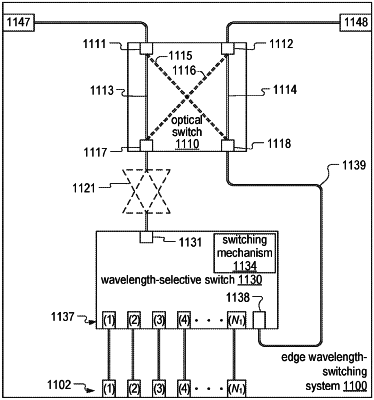| CPC H04J 14/0212 (2013.01) [H04B 10/03 (2013.01); H04B 10/07953 (2013.01); H04B 10/25891 (2020.05); H04Q 11/0005 (2013.01); H04Q 2011/0015 (2013.01); H04Q 2011/0016 (2013.01); H04Q 2011/0081 (2013.01)] | 20 Claims |

|
1. A failover recovery method for an optical network including a central edge wavelength switching system (EWSS) having an optical switch, a wavelength-selective switch (WSS) connected to a plurality of local ports in operable communication with a plurality of optical transceivers, respectively, disposed throughout the optical network, the method comprising steps of:
monitoring, by the EWSS, bit-error rates (BERs) received from one or more of the plurality of optical transceivers at respective local ports of the plurality of local ports;
determining a BER severity from a temporal sequence of BERs generated from a first transceiver of the plurality of optical transceivers at a first premise host equipment optically coupled to a first port of the plurality of ports, wherein the EWSS is disposed at a network node of the optical network, and wherein the network node optically coupled to a hub of the optical network by way of a first optical-fiber path; and
rerouting optical signals transmitted between the first premise host equipment and the hub, when the BER severity exceeds a predetermined value, by causing the optical switch to change between a parallel mode and a crossed mode, such that the optical signals travel along a second optical-fiber path differing from the first optical-fiber path.
|